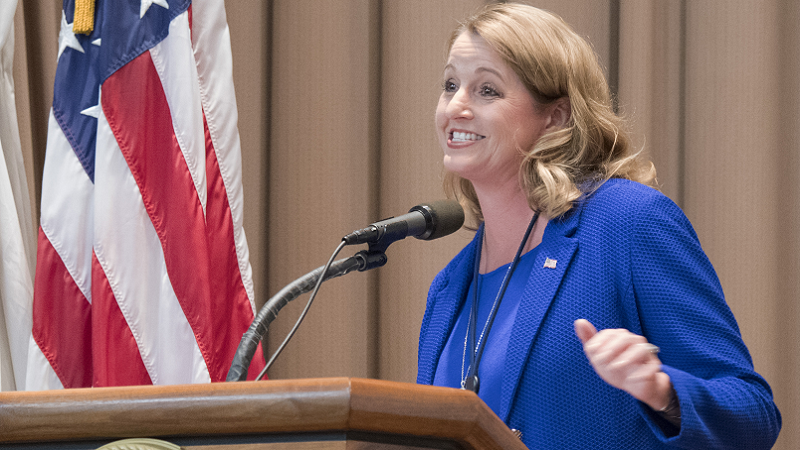
User-centered, citizen-based design must be at the heart of government technology initiatives in the next decade, and diversity at the decision-making table must inform the outcome of those efforts, said Federal CIO Suzette Kent.
Speaking at the Adobe Digital Government Symposium in Washington today, Kent discussed how the President’s Management Agenda issued in March will treat service of constituents as a quarterly measure of success going forward.
“We’re trying to create a decade-long strategy,” Kent said of the PMA and efforts to implement the agenda.
In recent appearances touting the administration’s plan for government technology services transformation, Kent has emphasized how IT modernization is one of the three main pillars of the PMA. But today she spoke about a less-referenced topic: how citizen-centric products will define those modernization choices.
“In that IT modernization is a commitment to move to user-centered design,” Kent said. “On the government side, we say user. That is the citizen. That is a taxpayer, that is a mission server, that is a veteran, that is a patient. That’s a lot of different personas, and we have to ensure that we’re spending the time to understand what we’re trying to deliver to that individual.”
Kent said the administration is “putting a disciplined, sustainable approach in place to involve customers” in the creation of products and services the government delivers to them. Modernization, she said, must focus less on the technology, and more on the people it serves.
“We had a great user design session with farmers out in Kansas, and they told us some of the things they wanted to fix had nothing to do with IT,” Kent said.
She used that example to explain how a collaborative approach is needed to tackle some less-publicized issues, drawing a connection to yet another pillar of the PMA–the workforce of the 21st century. Finding appropriate talent for the workforce, Kent said, is a “central part of how we have sustained transformation.”
“We’re looking at not only what we need to do today, but what are the jobs going to look like in the future, and how are we preparing our workforce to take on those responsibilities and to be successful in the mission they’re serving,” she said.
Preparing that workforce to build lasting success for users, she said, means surrounding workers with a collection of viewpoints representative of the community at large.
“As we build our teams and we position for innovation, we have to keep a commitment to diversity of thinking at the forefront,” she said. “We have to ensure that the teams we bring together to drive user design, to drive collaboration, and to build a foundation for the government of the 21st century, reflect the population that we’re serving. Diverse teams produce better results.”
